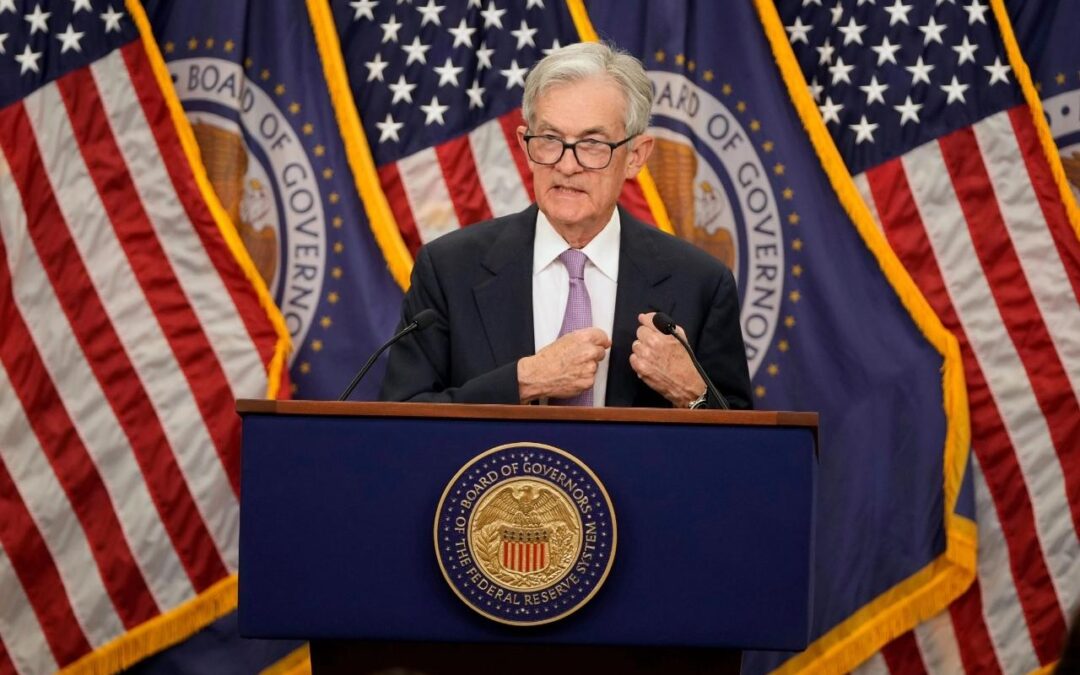The Federal Reserve’s recent quarter-point interest rate cut marks the start of a new monetary easing cycle aimed at supporting the U.S. economy amid signs of slowing growth. This first reduction in nine months is significant, reflecting the Fed’s shift in focus towards preserving employment while managing inflation.
The US stock futures advanced and Treasury yields fell as markets digested the news, signaling cautious optimism amid uncertainty. This article explores how the Fed’s rate move impacts the economy and how US markets have responded.
Why the Fed Cut Rates?
The Fed’s 0.25% rate cut lowers the benchmark lending rate to a 4.00-4.25% range, the first adjustment since December 2024. This action is designed to stimulate economic growth by making borrowing cheaper for consumers and businesses. Lower rates encourage companies to invest and hire more, while consumers may spend more on items like homes and cars, supporting broader economic activity.
Recent economic data showed a slowing labor market with smaller job gains and a slight uptick in unemployment. These developments raised concerns about employment and prompted the Fed to act preemptively. Fed Chair Jerome Powell emphasized that risks to jobs now outweigh inflation concerns, signaling a shift in policy focus. This careful approach aims to balance supporting the economy without triggering excessive inflation.
Market Reaction: Stocks, Bonds, and the Dollar
The initial market response was mixed. Nasdaq index futures rose modestly, with the S&P 500 futures gaining about 0.5%, while the Dow Jones Industrial Average showed more strength during the session. Though some tech-heavy indexes like Nasdaq dipped slightly, the overall sentiment was positive due to expectations for further rate cuts.
Treasury yields dropped, with the 10-year yield falling to around 4.05%, reflecting investors seeking safer assets amid economic uncertainty. On the other hand, the US dollar edged higher in early trading, surprising some analysts who expected a decline following the cut. This reaction suggests cautious optimism but with attention focused on upcoming data and Fed communications for clearer direction.
The Fed’s Dilemma
The Fed aims to address two key mandates: maximizing employment and stabilizing prices. Lowering rates helps businesses hire and consumers spend, which can boost job growth. However, rate cuts also risk pushing inflation higher by increasing demand. Currently, inflation remains above the Fed’s 2% target but shows signs of moderating.
The Fed’s quarter-point cut is a measured step, reflecting confidence that this easing will support the economy without unleashing runaway inflation. Policymakers remain vigilant, ready to adjust if inflation pressures rise again or the labor market strengthens unexpectedly. This balance is delicate, requiring ongoing analysis of employment reports, inflation data, and consumer spending.
Also read: Ambani vs Adani: Who Will Win Gujarat’s Kutch to Lead India’s Renewable Energy Sector?
What Lies Ahead?
The Fed signaled the possibility of two more quarter-point cuts by year-end if economic data continues to weaken, suggesting a gradual easing path rather than aggressive cuts. Markets are pricing in a slower but positive growth trajectory with the goal of avoiding recession while supporting the labor market.
However, risks remain. Too many rate cuts could create asset bubbles or inflation spikes, while too few might fail to sustain growth. The Fed must also contend with financial stability concerns as low rates sometimes encourage riskier borrowing and investing. Additionally, a weaker U.S. dollar from lower rates may impact global trade and emerging markets.
In the short term, consumers may benefit from lower mortgage rates and cheaper credit, although savers may face reduced returns on deposits. Investors will carefully watch the Fed’s next moves, balancing optimism with the realities of an evolving economic landscape.
Overall, the Fed’s interest rate cut reflects a strategic response to shifting economic conditions, emphasizing job preservation and growth while cautiously monitoring inflation. Markets have reacted with a mix of relief and cautious anticipation as the U.S. navigates these monetary policy changes.
Written By Fazal Ul Vahab C H


